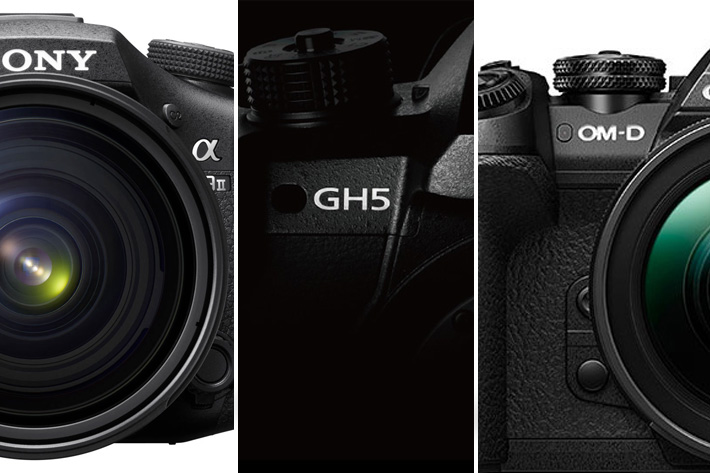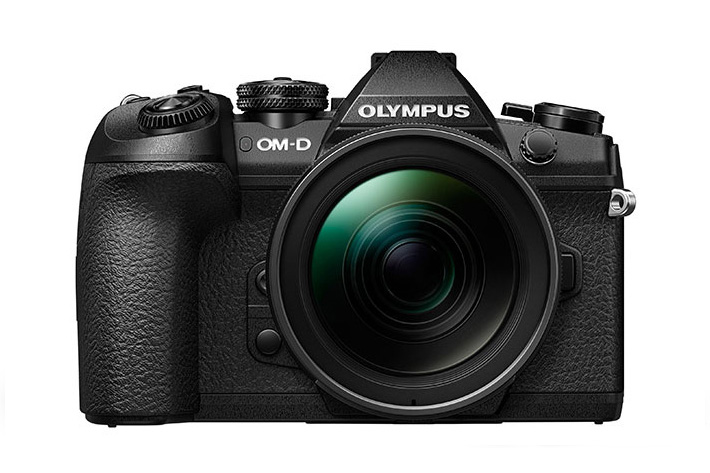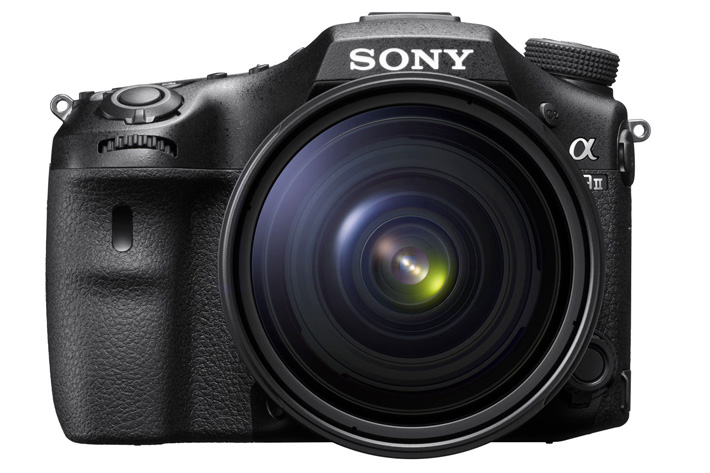
With Photokina 2016 about to begin, there is a deluge of new products arriving to the market. While it is interesting to explore what each offers in detail, for now we’ve opted to compare what some of the most popular camera makers, Panasonic, Olympus and Sony, offer in terms of video. So here are the specifications from some of the models announced today.
We’ve written before that Olympus seemed to be on the way to implement video in more interesting ways, and the new E-M1 Mark II is a sign of that, from what one can understand reading the information available.
The Olympus OM-D E-M1 Mark II will support Digital Cinema Standard 4K (4096 x 2060 pixels) video capture (with 4K UHD, 3842 x 2160 pixels, also possible) at a 24P frame rate and a bit rate of up to 237 Mbps for authentic movie production, says Olympus. The 20.4 megapixel Live MOS sensor will provide a read speed three times faster than that of the predecessor model for effective suppression of movement distortion, resulting in sharp, clear image quality. The video-specific picture mode “Flat” will be ideal for color grading and finishing the footage exactly as envisioned by the videographer.

With four times the resolution of Full HD, 4K videos are easily affected by camera movement and typically require a tripod, mini jib, crane, and other specialized accessories for movie recording. The OM-D E-M1 Mark II will pair its advanced 5-Axis Image Stabilization with electronic stabilization specialized for movies (M-IS) (The angle of view is narrowed when using electronic stabilization for movies (M-IS1) effectively reduce camera shake, making handheld 4K video capture possible. This outstanding image stabilization system will allow videographers to easily shoot movies with virtually no visible camera shake. The camera’s rear vari-angle LCD monitor will be adjustable to the user’s preferred angle for shooting convenience.
The HDMI monitor connection will provide the ability to view live video output live on a larger display while shooting. Users will be able to select from Monitor Mode for an external monitor and Recording Mode to capture uncompressed video directly from the HDMI port. The OM-D E-M1 Mark II will be equipped with a synchronization signal so that video recording to an external device may be started or stopped from the camera. A 4:2:2 external output will be provided to meet a wider color correction range. An audio synchronization function will make it easy to synchronize audio recording when using Olympus’ Linear PCM Recorder LS-100 while recording video, and a Slate Tone function will facilitate the syncing of recorded audio and video.

For Sony the news have a name: ɑ99 II. The new top of the line camera when it comes to SLTs introduces a “newly developed Phase Detection AF System that is capable of ‘full-time AF’ and is the first implementation of 4D FOCUS in the full-frame ɑ series, bringing a supreme new level of AF performance to ɑ99 II users. The Hybrid Phase Detection AF System is enabled by combining a precision 79-point dedicated phase detection AF sensor with 399 focal plane phase detection AF points, to produce a 79 hybrid cross AF point array, says Sony. These cross points deliver incredibly precise autofocus performance and advanced subject tracking of any moving objects right across the image, at high speed. In addition, as there is no moving mirror, TMT enables continuous AF operation and the finder image remains unaffected during any type of shooting, including live view and movie recording.
When it comes to video, Sony has Movie Magic. According to the information available, the ɑ99 II enables internal 4K movie recording featuring full pixel readout, without pixel binning, for ultimate high resolution video in the pro friendly XAVC S format. It is capable of recording high quality footage at 100Mbps for 4K recording. A new ‘Slow and Quick’ mode (S&Q) supports both slow motion and quick motion. Frame rates from 1 fps to 120 fps (100 fps) can be selected in 8 steps for up to 60x (50x) quick motion and 5x (4x) slow motion recording.
A number of features designed for a professional movie production workflow are included such as picture profiles, time code and HDMI clear output and the new ɑ99 II now also offers gamma assist for real time S-Log monitoring and a zebra mode for easier exposure adjustment. S-Log3 and S-Log2 gamma are now included, making wide dynamic range shooting possible with blown highlights or blocked shadows making the ɑ99 II easily integratable into a fully professional movie production workflow.
The new ɑ99 II will start shipping in November, priced around $3,200.
Panasonic confirmed today that the Lumix GH5 is real… but it only appear in the market early 2017. So if you thought about a Panasonic for your Christmas gift you’ve to think of something else. Confirmed, though, is that the Digital Single Lens Mirrorless camera Lumix GH5 will work at 4K 60p/50p and 4:2:2 10-bit 4K video recording (in 4K/30p, 25p, 24p, 23.98p video recording), which has never before been achieved by a Digital Single Lens Mirrorless camera, as of 19 September, 2016, according to a Panasonic survey. With this unprecedented, as Panasonic calls it, video recording performance, Panasonic aims to further capitalize on the strength that it has achieved in the film production industry.
The camera will be on show at Photokina, associated with a Leica DG VARIO-ELMARIT F2.8-4.0 Lens Series. Achieving both high optical performance and a compact size, the Leica DG VARIO-ELMARIT F2.8-4.0 Lens Series includes a new 12-60mm standard zoom lens, 8-18mm wide zoom lens and 50-200mm telephoto zoom lens that will be showcased as a reference exhibit at the Panasonic booth.
Another aspect that is new relates to the photo side of the Lumix GH5. Now, the conventional ‘4K PHOTO’ function is dramatically advanced to form ‘6K PHOTO’ (“6K PHOTO” is a high speed burst shooting function that cuts a still image out of a 4:3 or 3:2 video ) which lets the user cut a still image out of ultra high-quality 18-megapixel video with approx. 9 times the pixel count than Full-HD. Taking advantage of its high-speed, long-time burst shooting capability, spur-of-the-moment shots can be saved in beautiful photos with higher resolution that complies with largerer-sized printing by substantially increasing the resolution from approx.8-megapixel (4K PHOTO) to approx.18-megapixel (6K PHOTO) Furthermore, approx.8-megapixel 4K PHOTO can be captured at 60 fps.

